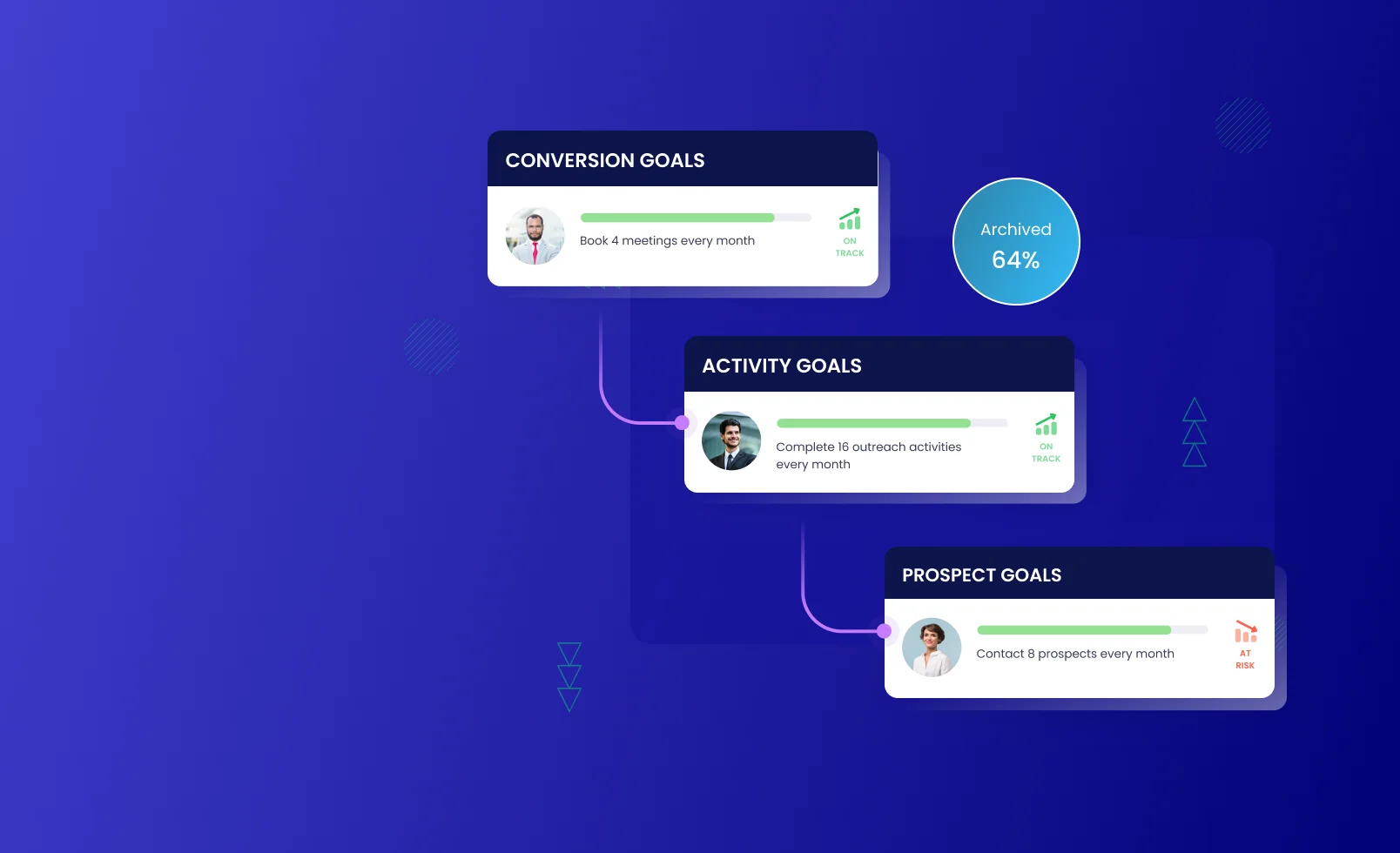Every sales manager’s dream is to make every sales rep in the team hit the monthly quota of meetings to book so that they have enough opportunities in the sales pipeline to hit the revenue goal.
But according to Gartner’s study, around 83% of the SDRs fail to consistently hit quota each month.
SDRs fail to hit the quota because most sales managers only set a monthly goal of SQL to generate for each rep, which is an ‘output goal’, but do not set clear sales engagement activities goals for each rep, which are ‘controllable input goals’.
For sales teams running multi-channel sequences to book meetings, managers need to clearly define the controllable input metrics for each rep. These are sales engagement activities - like prospects contacted, the daily number of emails sent, phone calls made, and talk time for each rep in the team. When sales managers fail to do this, they do not have a clear idea of what activities each rep is performing and where one needs to improve to hit the monthly target - is the rep adding enough prospects daily? How many calls is the rep making? Is the rep having issues with reply rates? Are enough follow-up touches being made?
With the output and input goals in place, managers can get a clear view of how each rep is progressing. They can find which input goals a particular rep needs to improve and guide them to perform better. And, make every rep in the team hit their target.
Introducing Goals. 🎉
What Are Goals?
Goals are based on the concept that focusing your energy on controllable input metrics is the most effective way to maximize your output metrics over time.
‘Output goals’ are the final outcomes a business would want to achieve, so most businesses focus on and aim to improve them. But only output goals are not enough because you don’t have direct control over the outcome.
For eg., an output goal could be to achieve 100% revenue growth over the last year. Although this goal is necessary, it is difficult to achieve without having monthly or even weekly steps to execute. These smaller, more tactical tasks are called ‘Input Goals’.
Here’s a simpler example.
If your goal is to lose weight, which is an ‘output goal’, you need to focus on your diet (calories intake every day) and your exercise regime (workouts per week), which are the ‘controllable inputs’.
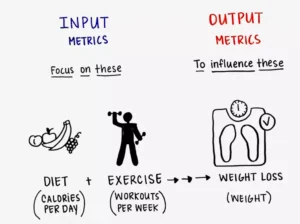
Benefits of having input goals:
- They clearly define the actions necessary to reach them
- They’re easier to share and adapt in a team environment
- They’re time-specific so the effort can be calculated
- You can measure them immediately and make real progress
- As goal cycles repeat, you can create good documentation to inform future goal setting
Different Goals To Set and Measure for Your Sales Team
To hit the ‘Output goal’ of monthly SQLs/opportunities to be generated, managers should ensure that they set the following ‘Input goals’ and measure the progress towards these goals based on different activity metrics.
| Input Goals | Purpose | Different activity metrics to measure |
|---|---|---|
| Prospects Contacted | To ensure that sales reps are spending enough time on prospecting to find the right leads and contact them | Number of new prospects added, Number of old prospects contacted |
| Activities Completed | To make sure that the sales reps are performing adequate sales activities daily | Number of emails sent, Number of calls made, Number of messages sent |
| Meetings Booked | To ensure that the sales reps are able to turn prospects into booked meetings | Number of positive replies, Number of scheduled meetings, Number of high-intent prospects |
Benefits of Using Goals in Your Sales Process
a) Provides Clear Focus
Goals remove ambiguity from your sales reps’ daily work and help them focus on a small set of high-impact objectives to hit their monthly quota. All sales reps are aware of what is expected of them, as the manager sets clear predefined goals for a certain timeframe.
b) Alignment with the Company Goal
Goals can help the sales manager break down the overall company goal into individual goals for each sales rep. Everyone on the team knows the impact the completion of their individual goals will have on the overall company goal.
c) Real-time Performance Tracking
Goals will allow the manager to measure and track the performance of every rep in real-time. This will help sales managers course-correct reps in their daily review meetings - like improving calling rates or improving response rates, and help them stay on course to hit their monthly quota.
d) Develops Commitment and Competence
Because goals are pre-set targets set at the beginning of every month, sales reps become emotionally invested in attaining the goals by building a deep sense of commitment to executing the activities that help them achieve the goal. Reps also develop a sense of healthy competition amongst each other to race towards the goals.
e) Build a Winning Team Culture
Goals will allow the sales managers to chalk clear plan activities for all reps and measure their performance daily. This will help sales managers find insights into top-performing reps and replicate that across the team to build a winning culture in the team.
How Do You Use Goals To Make Every Sales Rep Hit Monthly Quota?
Goals will help sales managers implement a sales process that involves - Pre-defined Goal Setting, Measure Daily Activity Metrics, and Analyse Individual Performance.

a) Pre-defined Goal Setting
Sales managers can set pre-defined sales engagement activity goals to achieve within a specific time frame for individual reps in the team. Reps can then plan their course of action because they clearly know what is expected of them.
b) Measure Daily Activity Metrics
Managers can easily measure the daily performance of each rep in a single dashboard. They can clearly view progress toward the completion of the planned sales engagement activities. Basically, managers can compare what is accomplished against what is expected from each rep.
c) Analyse Individual Performance
Managers will be able to drill down into the details of which rep is ahead and which rep is at risk of not achieving their goals. Based on this information, they can take corrective actions in the daily feedback sessions. They can find insights into what the other best-performing reps are doing and coach those who are at risk to motivate them to achieve their goals.
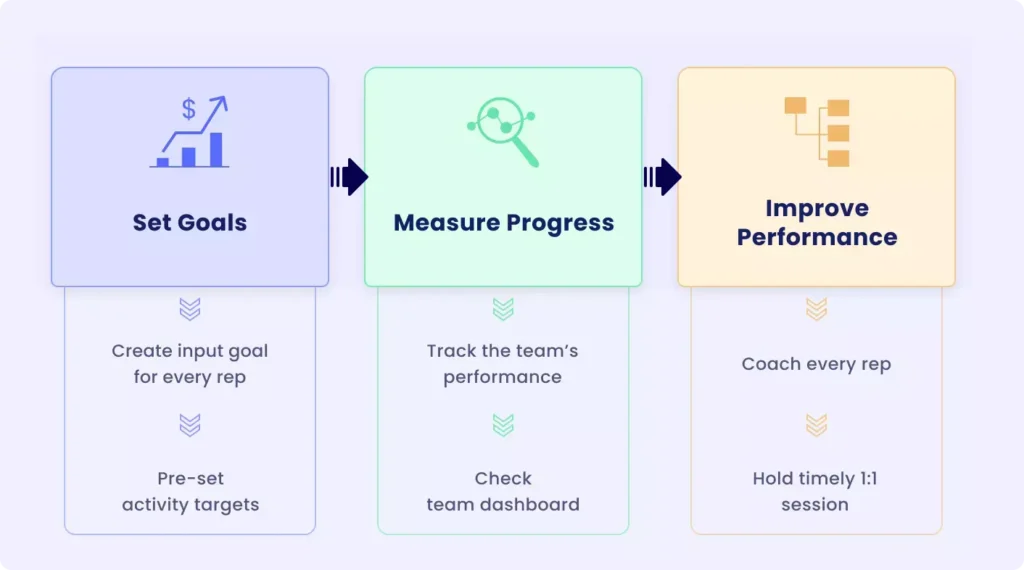
How To Set Up Goals in Klenty To Build a Winning Sales Culture?
a) Pre-defined Goal Setting
As soon as you launch goals, you will be allowed to choose three types of goals to set for your sales team—Contact Prospects, Sales Activities, and Meetings Booked. These are the most important sales engagement activities your reps need to perform daily to reach their monthly target.
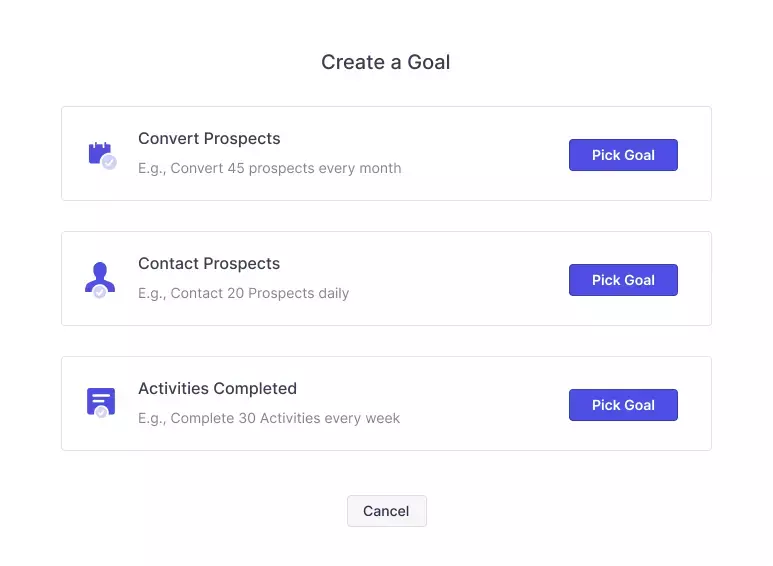
For each goal, you can set a target, and select the time period and assignees.
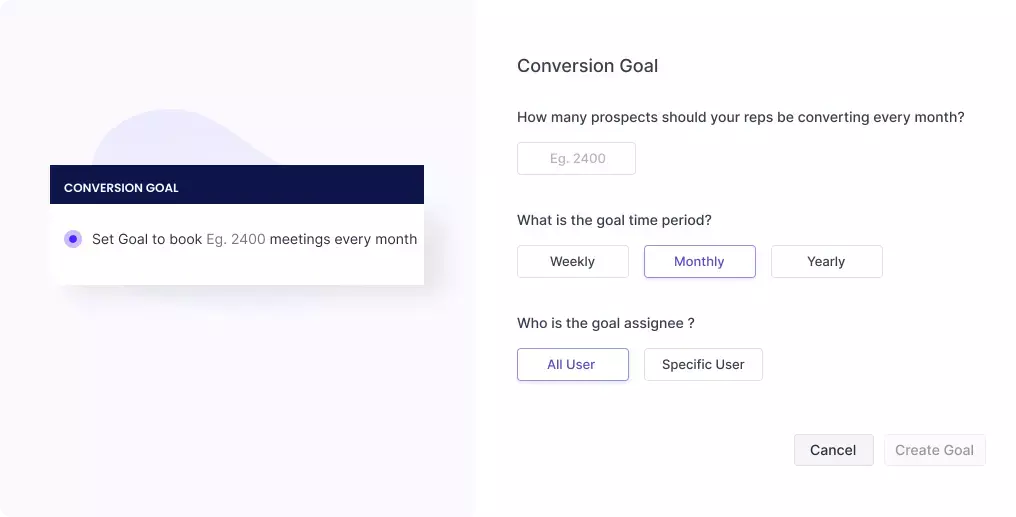
If you select "Specific User", you can set different targets for different reps in your team.
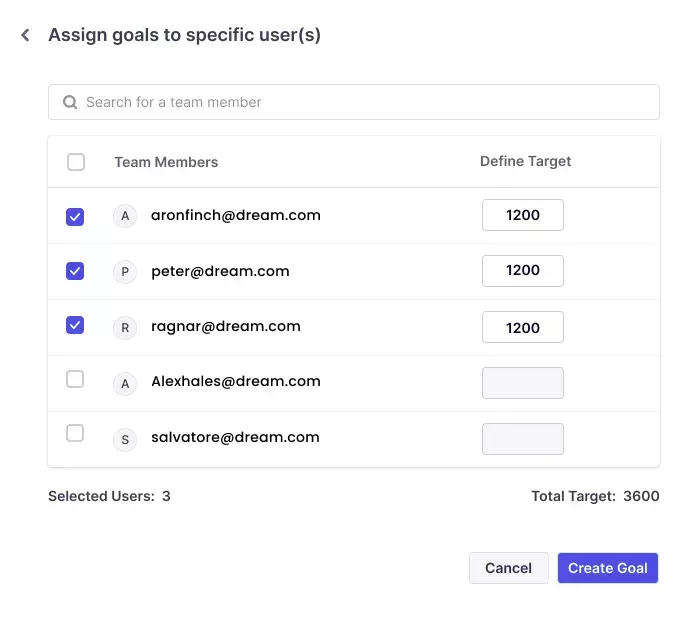
b) Measure Daily Activity Metrics
Managers can get a clear view of the progress of each rep toward their goals in a single dashboard. They can also compare what is accomplished against what is expected from each rep. This helps the manager know who is lagging and who is ahead.
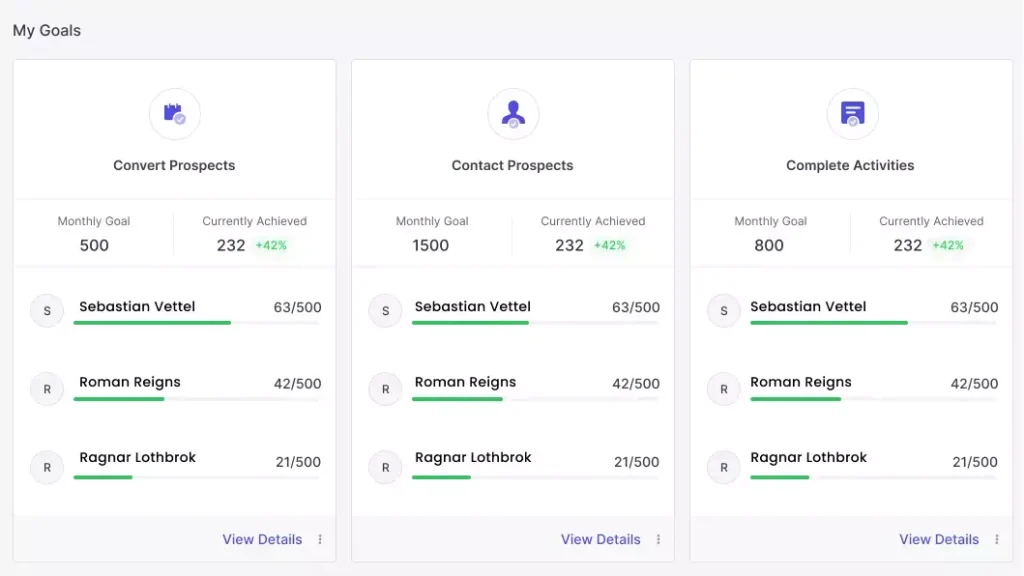
c) Analyse Individual Performance
Managers will be able to drill into the details of the sales engagement activity metrics of individual reps to know why reps are on track or at risk of hitting the goals. They can get insights into how successful reps are able to be on track and coach other reps who are at risk by helping them prospect better, improve calling rates, increase responses, and so on.
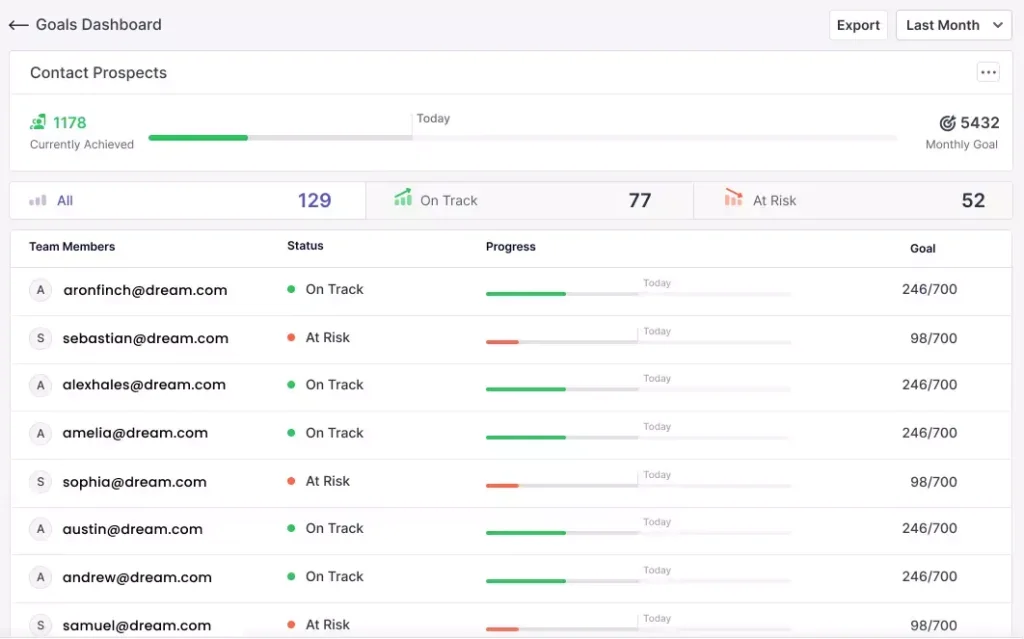
Conclusion
Most sales reps fail to consistently hit quota each month because sales managers are unable to set a sales process that allows them to easily break the overall revenue target into simple sales engagement activity goals. With Goals, it is time managers set up a process that helps them guide every rep in the team to become successful and set up a winning culture in the team.
